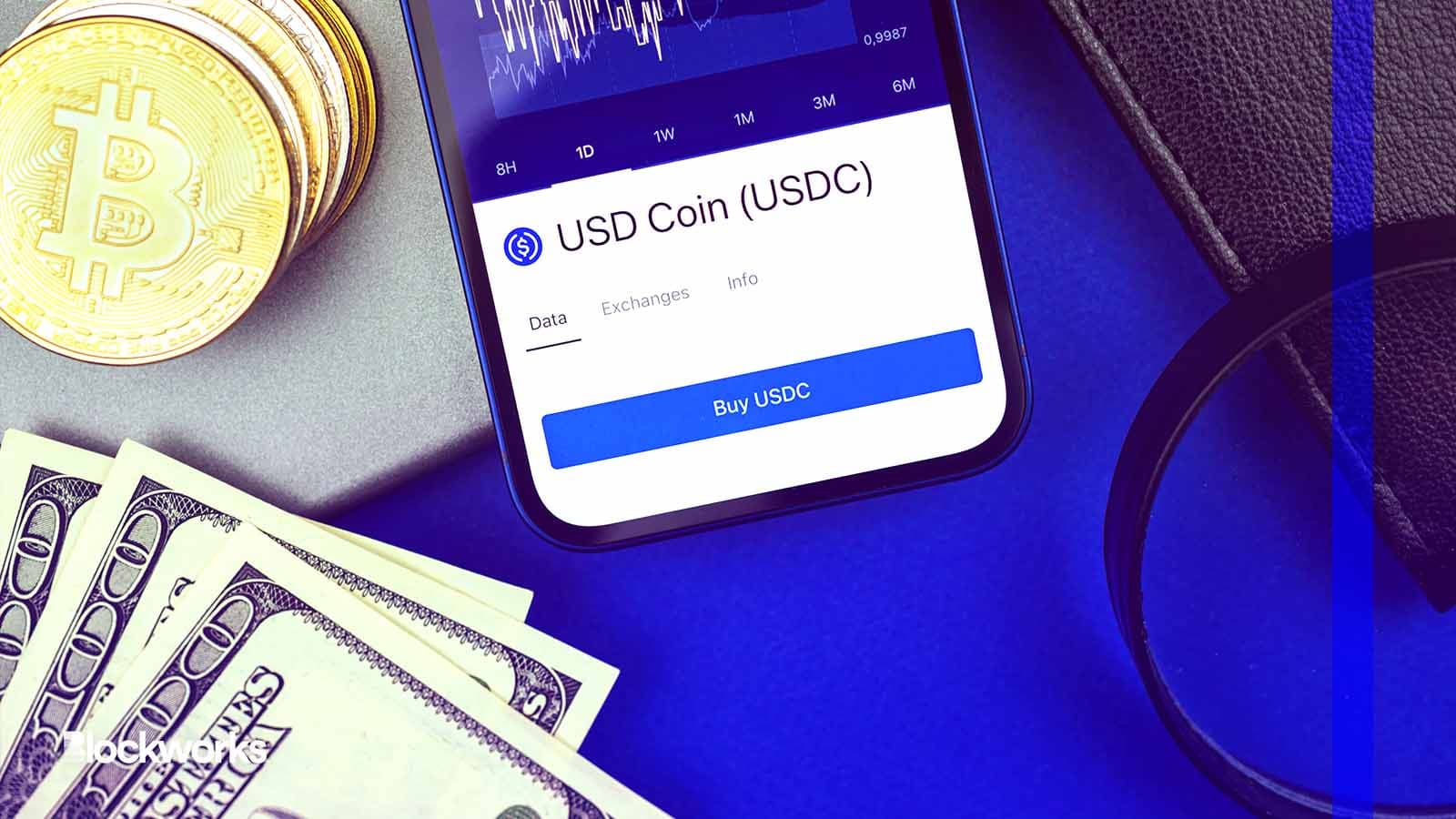Coinbase’s Circle investment reflects the shoring up of major revenue stream
The crypto exchange’s Interest income on USDC amounted to roughly 23% of its net revenue during the second quarter

FellowNeko/Shutterstock modified by Blockworks
Coinbase invested in Circle, the issuer of USDC, on Monday. This move comes as the crypto exchange has been increasingly depending on interest income from the stablecoin, especially in recent quarters where transaction revenue has been low.
The move reflects the attempt to shore up that revenue stream, analysts said, as USDC’s market capitalization has declined substantially over the last year.
Coinbase took an undisclosed equity stake in Circle, the companies said Monday. They also revealed that USDC would launch on six new blockchains in the coming months, and that the self-governance consortium for USDC will no longer exist.
The news seems to show Coinbase has become more willing to use its financial reserves now that it has reduced its expenses and limited its cash burn, according to Morningstar analyst Michael Miller.
“It also shows Coinbase’s commitment to USDC despite how much its market capitalization has declined since Silicon Valley Bank failed,” Miller said.
Read more: Why USDC’s market cap is half of what it was a year ago
Owen Lau, executive director at Oppenheimer and Co. added: “I think it is an improved agreement which demonstrates that both companies put more emphasis on long-term cooperation over near-term competition.”
Coinbase and Circle generate revenue from USDC reserves interest income. Under the new arrangement revealed on Monday, this revenue will continue to be shared based on the amount of USDC held on each of their platforms.
The two companies “will now equally share in interest income generated from the broader distribution and usage of USDC,” a Monday blog post added.
A Coinbase spokesperson declined to disclose the previous agreement. The representative pointed to public statements when asked about the overall impact of the new deal.
“The language in Coinbase’s blog post indicates that it had been receiving a lesser share of interest income on USDC held on other platforms than the share that Circle had received,” said Mark Palmer, an analyst at Berenberg Capital Markets.
Miller said it remains unclear how meaningful the interest revenue share from non-reserve sources really is.
A crucial revenue source
Interest income on USDC amounted to $151 million during the second quarter — equal to roughly 23% of the company’s net revenue.
According to Lau, the new agreement between Coinbase and Circle shouldn’t materially change Coinbase’s revenue from USDC interest income in the near term.
“The equal split of interest income also increases the predictability of Coinbase’s share of USDC interest income going forward,” he told Blockworks.
Despite interest income from USDC making up nearly a quarter of Coinbase’s net revenue in the second quarter, the $151 million figure was down from $199 million the quarter before. The drop was primarily due to a 28% quarter-over-quarter decrease in USDC’s average market capitalization, Coinbase said in its August shareholder letter.
Palmer said the net revenue Coinbase derives from interest income from USDC will continue to be driven by the stablecoin’s market cap, which has continued to fall steadily in recent months.
“Coinbase is relying upon this revenue since its transaction-based revenue remains depressed, while a portion of the company’s staking-related revenue is at risk due to the regulatory actions of 10 states,” he told Blockworks.
Indeed, Coinbase’s transaction revenues dropped from $374 million in the first three months of 2023 to $327 million in the second quarter. The crypto exchange had seen such revenues reach as high as nearly $2.3 billion during the fourth quarter of 2021.
The US Securities and Exchange Commission sued Coinbase in June for alleged unregistered securities violations — charges the company denies. Various states quickly joined the effort in going after Coinbase, focusing on its trading and staking services.
Coinbase said in its Aug. 3 shareholder letter that in Q4 2023, it expects to generate at least $300 million in subscription and services revenue — a segment in which the largest piece is interest income. The subscription and services business line, which also includes blockchain rewards, totaled $335 million in the second quarter.
The company said Monday in a thread on X that it does not expect its new arrangement with Circle to impact its financial outlook.
Get the news in your inbox. Explore Blockworks newsletters:
- The Breakdown: Decoding crypto and the markets. Daily.
- 0xResearch: Alpha in your inbox. Think like an analyst.






